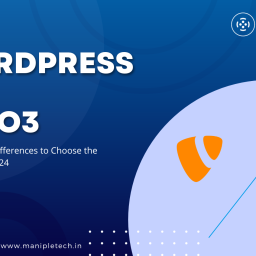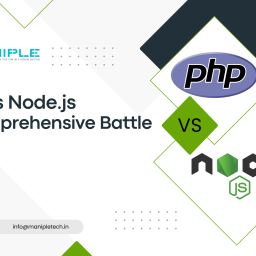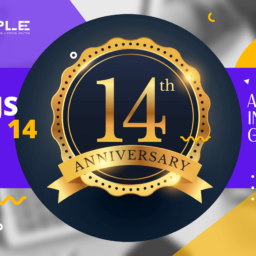
OVERVIEW
In the ever-changing world of technology, programming languages play a crucial role in shaping our digital environment. Technology trends evolve rapidly, with new tools emerging and old ones fading away over time. Whether you’re a beginner programmer looking to start your career or a mid-level developer seeking to transition to new technologies, it’s essential to explore the latest programming language trends and their future potential.
For programmers, especially beginners, choosing the right programming language can make a significant impact on their career path. Whether you’re interested in learning the most popular language of today or preparing for the future, understanding the current and upcoming trends is essential. Similarly, stakeholders involved in project management also need to stay informed about the best programming languages to ensure their projects remain relevant and effective in the long term.
As we step into the year 2024 and beyond, keeping up with the latest trends in programming languages becomes increasingly important. Let’s take a closer look at the top five programming languages that are expected to shape the technological landscape in the years to come.
While there are numerous programming languages to choose from, we’ll focus on the top five languages that are both popular and promising for the future. These languages have established themselves as leaders in the field and are likely to remain influential in the years ahead.
Top 5 Programming Languages
Below are the top five programming languages we’ve identified. These languages stand out as some of the best options available among the multitude of programming languages. We’ve selected them not only for their current popularity but also for their promising potential for the future.
Popular Websites using PHP
- Javascript
- Python
- Typescript
- Java
- PHP
What is a Programming Language?
Let’s take a moment to grasp the concept of a “Programming Language.”
A programming language is a way for programmers (developers) to communicate with computers. Programming languages consist of a set of rules that allows string values to be converted into various ways of generating machine code, or, in the case of visual programming languages, graphical elements.
These languages have their own rules and syntax, similar to grammar and vocabulary in human languages. They allow programmers to write code, which is a set of instructions that the computer can understand and execute.
Types of Programming Languages
Let’s break down programming languages into different categories. This can be useful for individuals looking to pursue a career as a programmer and for stakeholders aiming to identify the right programming languages for their projects.
By categorizing programming languages, you can streamline your career path as a programmer and make informed decisions as a stakeholder when selecting the most suitable languages for your projects.
- Procedural Programming Languages
- Functional Programming Languages
- Object-oriented Programming Languages
- Scripting Languages
- Logic Programming Languages
- Imperative Programming
Other Ways to Classify Programming Languages
Let’s explore another method of classifying programming languages. This approach can assist you in understanding and selecting the programming language that best suits your interests and needs, whether you’re a programmer or a stakeholder.
- FrontEnd Languages
- BackEnd Languages
- High-level Languages
- Low-level Languages
- Interpreted Languages
- Compiled Languages
Statistics
Before we proceed, let’s examine some statistics that shed light on why we’ve chosen these top five programming languages. Understanding these numbers can provide valuable insights into the popularity and relevance of these languages in today’s tech landscape.
Marketshare
Let’s examine the statistics below. According to current market share data, the top five programming languages are highlighted. It’s evident from these numbers that both Python and Java hold significant dominance in the current market.
Ref and credits: 99Firms
Popularity
Let’s examine the diagram below, sourced from Statista at the end of 2023. It clearly illustrates that our chosen top five languages—JavaScript, Python, TypeScript, Java, and PHP—are dominating the digital realm and are highly popular among developers.

Credit: Statista
Top 5 Programming languages
Let’s now go in depth and explore these top 5 programming languages.
1. JavaScript: The Undisputed King of Web Development
JavaScript continues to reign supreme as the cornerstone of web development. With its versatility and widespread adoption, JavaScript powers interactive and dynamic web experiences across diverse platforms. As the backbone of frameworks like React, Angular, and Vue.js, JavaScript enables developers to build responsive and feature-rich web applications seamlessly.
HISTORY & EVOLUTION:
- JavaScript was created by Brendan Eich in 1995 while he was working at Netscape Communications Corporation.
- Initially named “LiveScript,” it was later renamed JavaScript to capitalize on the popularity of Java.
- JavaScript gained significant traction with the rise of the internet and the need for dynamic and interactive web pages.
- The language has evolved significantly over the years, with regular updates and new features being added through the ECMAScript specification.
FEATURES:
- High-level: JavaScript is a high-level language, meaning it abstracts away many low-level details, making it easier to write and understand code.
- Interpreted: JavaScript is an interpreted language, which means that the code is executed line by line, without the need for a compilation step.
- Dynamic Typing: JavaScript is dynamically typed, allowing variables to hold values of any type without explicit type declarations.
- Prototype-based Object-Oriented: JavaScript uses prototypes rather than classes for inheritance, which provides flexibility but can also lead to complex code.
- Functional Programming Support: JavaScript supports functional programming paradigms, allowing functions to be first-class citizens and supporting features like higher-order functions and closures.
Usage:
- Web Development: JavaScript is primarily known for its use in web development, where it is used to add interactivity, validate forms, manipulate the DOM (Document Object Model), and create dynamic web applications.
- Frontend Frameworks and Libraries: Frameworks like React, Angular, and Vue.js, as well as libraries like jQuery, provide powerful tools for building complex user interfaces and managing state in web applications.
- Server-side Development: With the introduction of Node.js, JavaScript can now be used for server-side development, allowing developers to build full-stack applications entirely in JavaScript.
- Mobile App Development: Technologies like React Native and Ionic allow developers to build cross-platform mobile applications using JavaScript.
- Desktop Application Development: Frameworks like Electron enable developers to create desktop applications using web technologies, including JavaScript, HTML, and CSS.
ECMAScript (ES) STANDARDS:
- ECMAScript is the standardized specification for JavaScript, which defines the syntax, semantics, and behavior of the language.
- New features and updates are regularly introduced through new versions of the ECMAScript specification.
- Some notable features introduced in recent versions include arrow functions, classes, async/await, modules, and the spread/rest operators.
Community and Ecosystem:
- JavaScript has one of the largest and most active developer communities in the world.
- The npm (Node Package Manager) ecosystem hosts millions of reusable packages and libraries, making it easy for developers to leverage existing code and accelerate development.
- Online communities, forums, and resources like Stack Overflow, GitHub, and various developer blogs provide ample support and resources for JavaScript developers.
- Continuous innovation and the open nature of the JavaScript ecosystem ensure that the language remains relevant and continues to evolve to meet the needs of developers.
Overall, JavaScript’s versatility, ease of use, and widespread adoption make it a top choice for developers across a variety of domains, from web development to mobile and desktop application development. Its dynamic nature and thriving ecosystem ensure that it will continue to be a dominant force in the world of programming for the foreseeable future.
2. Python: A Multipurpose Powerhouse
Python’s meteoric rise in recent years has solidified its position as a multipurpose programming language. Renowned for its simplicity, readability, and extensive libraries, Python empowers developers to tackle a myriad of tasks ranging from web development and data analysis to artificial intelligence and machine learning. Its popularity is further bolstered by frameworks like Django and Flask, making Python an indispensable tool for developers across various domains.
HISTORY & EVOLUTION:
- Python was created by Guido van Rossum and first released in 1991. Its design philosophy emphasizes code readability and simplicity, with an emphasis on clear and concise syntax.
- Python’s name was inspired by the British comedy group Monty Python, indicating the creator’s sense of humor.
- Python has undergone several major revisions, with Python 2.x being the dominant version for many years until Python 3.x was introduced in 2008. Python 2 reached its end-of-life in January 2020, with Python 3.x now being the standard.
FEATURES:
- Simple and Readable Syntax: Python’s syntax is clean and easy to read, making it accessible to beginners and experienced developers alike. It emphasizes readability and encourages developers to write code that is easy to understand and maintain.
- Dynamic Typing: Python is dynamically typed, meaning that variable types are determined at runtime. This allows for greater flexibility and rapid development but can also lead to runtime errors if not carefully managed.
- Interpreted and Interactive: Python is an interpreted language, which means that code is executed line by line by the Python interpreter. It also supports an interactive mode, where code can be executed and tested interactively in a REPL (Read-Eval-Print Loop) environment.
- Strong Standard Library: Python comes with a comprehensive standard library that provides support for a wide range of tasks, including file I/O, networking, web development, data manipulation, and more. This reduces the need for external dependencies and accelerates development.
- Multi-paradigm: Python supports multiple programming paradigms, including procedural, object-oriented, and functional programming. This flexibility allows developers to choose the best approach for solving a particular problem.
Usage:
- Web Development: Python is commonly used for web development, with frameworks like Django and Flask being popular choices for building web applications. These frameworks provide tools and libraries for handling routing, templating, authentication, and more.
- Data Science and Machine Learning: Python has become the de facto language for data science and machine learning, thanks to libraries like NumPy, pandas, scikit-learn, TensorFlow, and PyTorch. These libraries provide powerful tools for data analysis, visualization, and machine learning model development.
- Automation and Scripting: Python is widely used for automation and scripting tasks, thanks to its simplicity and readability. It is often used for tasks such as system administration, data processing, and task automation.
- Desktop GUI Development: Python can be used for desktop GUI development using libraries like Tkinter, PyQt, and wxPython. These libraries allow developers to create cross-platform desktop applications with graphical user interfaces.
- Game Development: While not as common as some other languages for game development, Python is still used in the game industry, particularly for indie game development and prototyping.
Community and Ecosystem:
- Python has a large and active community of developers, educators, and enthusiasts who contribute to its growth and evolution.
- The Python Package Index (PyPI) hosts tens of thousands of third-party packages and libraries, making it easy for developers to extend Python’s functionality and leverage existing code.
- Online communities, forums, and resources like Stack Overflow, GitHub, and various Python-focused blogs and websites provide support, tutorials, and code examples for Python developers.
- Python’s community-driven development model ensures that the language remains relevant and continues to evolve to meet the needs of developers
Future Trends:
- Python’s popularity continues to grow across a wide range of domains, including web development, data science, machine learning, and more.
- The rise of artificial intelligence (AI) and data-driven decision-making has further fueled Python’s adoption, thanks to its strong support for data science and machine learning.
- Python’s simplicity, versatility, and rich ecosystem position it well for continued growth and innovation in the future.
Overall, Python’s simplicity, readability, and extensive ecosystem make it a top choice for a wide range of applications, from web development to data science and beyond. Its growing popularity and vibrant community ensure that it will remain a dominant force in the world of programming for years to come.
3. TypeScript: Elevating JavaScript Development to New Heights
TypeScript, a superset of JavaScript, has emerged as a game-changer for modern web development. By introducing static typing and enhanced tooling support, TypeScript enhances developer productivity, facilitates code refactoring, and improves code maintainability. With major companies embracing TypeScript for large-scale projects, it’s poised to become a staple in the JavaScript ecosystem, offering unparalleled scalability and robustness.
HISTORY & EVOLUTION:
- TypeScript was developed by Microsoft and first released in 2012. Anders Hejlsberg, known for his work on C# and Delphi, played a significant role in the creation of TypeScript.
- TypeScript was designed to address some of the shortcomings of JavaScript, particularly in the context of large-scale application development. It introduces static typing and other features to improve code quality, maintainability, and developer productivity.
- TypeScript is an open-source language and is actively maintained by Microsoft and the TypeScript community. It has seen widespread adoption, particularly in the web development community.
FEATURES:
- Static Typing: One of the key features of TypeScript is its support for static typing. Developers can specify types for variables, function parameters, return values, and more. This helps catch errors early in the development process and provides better tooling support, such as code completion and refactoring.
- Interfaces and Type Declarations: TypeScript allows developers to define interfaces and type declarations, which describe the shape of objects and provide additional documentation for the code. This helps improve code clarity and maintainability, particularly in large codebases.
- ECMAScript Compatibility: TypeScript is a superset of JavaScript and is fully compatible with existing JavaScript code. This means that developers can gradually adopt TypeScript in their projects and leverage existing JavaScript libraries and frameworks without any modifications.
- Advanced Tooling: TypeScript comes with advanced tooling support, including a powerful type checker, code editor integrations (such as Visual Studio Code), and language services. These tools help developers write cleaner and more maintainable code and catch errors before runtime.
- Modern Language Features: TypeScript supports many modern language features introduced in recent versions of JavaScript, such as arrow functions, classes, async/await, and modules. This allows developers to write code using modern JavaScript syntax while still benefiting from TypeScript’s static typing and other features.
Usage:
- Web Development: TypeScript is commonly used for web development, particularly for building large-scale and complex web applications. It is often used with popular frontend frameworks and libraries like React, Angular, and Vue.js, which provide TypeScript support out of the box.
- Node.js Development: TypeScript is also used for server-side development with Node.js. It allows developers to write backend code using TypeScript, with benefits such as static typing, code organization, and better tooling support.
- Cross-Platform Development: TypeScript’s compatibility with JavaScript and its ability to target different platforms (such as the browser, Node.js, and native mobile apps using frameworks like React Native) make it suitable for cross-platform development.
- Library and Framework Development: Many open-source libraries and frameworks are written in TypeScript or provide TypeScript typings. This makes it easier for developers to use these libraries in their projects and provides better documentation and tooling support.
- Enterprise Applications: TypeScript is well-suited for building enterprise applications, thanks to its support for static typing, interfaces, and advanced tooling. It helps improve code quality, maintainability, and developer productivity in large codebases.
Community and Ecosystem:
- TypeScript has a growing and vibrant community of developers, educators, and enthusiasts who contribute to its growth and adoption.
- The TypeScript ecosystem includes a wide range of tools, libraries, and frameworks that provide additional functionality and support for TypeScript development.
- Online communities, forums, and resources like Stack Overflow, GitHub, and various TypeScript-focused blogs and websites provide support, tutorials, and code examples for TypeScript developers.
- Microsoft actively supports the TypeScript project and provides regular updates, documentation, and tooling improvements to enhance the developer experience.
Future Trends:
- TypeScript’s popularity continues to grow, driven by its strong support for large-scale application development, modern language features, and advanced tooling.
- As web applications become increasingly complex and demanding, TypeScript is expected to play a larger role in the web development ecosystem.
- TypeScript’s compatibility with JavaScript and its ability to target multiple platforms make it – well-positioned for future growth and adoption in a variety of domains, including web development, server-side development, and mobile app development.
Overall, TypeScript’s static typing, interfaces, advanced tooling, and compatibility with JavaScript make it a powerful and versatile language for building modern web applications. Its growing popularity and strong community support ensure that it will remain a top choice for developers seeking to build scalable, maintainable, and high-quality software.
4. Java: A Time-Tested Workhorse
Despite the emergence of newer languages, Java maintains its relevance as a stalwart in the programming landscape. Trusted for its platform independence, robustness, and scalability, Java continues to power enterprise-grade applications, Android development, and backend systems. With recent updates and enhancements in the Java ecosystem, including Project Loom and Jakarta EE, Java remains a formidable force in software development.
HISTORY & EVOLUTION:
- Java was developed by James Gosling and his team at Sun Microsystems in the early 1990s. It was originally designed for use in embedded systems but later pivoted to become a general-purpose programming language.
- Java 1.0 was released in 1996, and since then, it has undergone several significant updates. The language and its associated ecosystem are maintained by Oracle Corporation after its acquisition of Sun Microsystems in 2010.
- One of the key milestones in Java’s history was the introduction of the Java Virtual Machine (JVM), which allows Java programs to run on any platform that supports the JVM, regardless of the underlying hardware and operating system.
FEATURES:
- Platform Independence: Java achieves platform independence by compiling source code into bytecode, which can run on any device that has a Java Virtual Machine (JVM). This “write once, run anywhere” capability is a fundamental aspect of Java’s design.
- Object-Oriented: Java is a fully object-oriented programming language, with support for features such as classes, objects, inheritance, polymorphism, and encapsulation.
- Strong Typing: Java is statically typed, meaning that all variables must be declared with a specific type at compile-time. This helps catch errors early in the development process and promotes code reliability.
- Garbage Collection: Java features automatic memory management through garbage collection, which frees developers from managing memory explicitly. This enhances developer productivity and reduces the likelihood of memory leaks and other memory-related errors.
- Rich Standard Library: Java comes with a comprehensive standard library, known as the Java Development Kit (JDK), which provides a wide range of classes and APIs for tasks such as I/O, networking, data manipulation, and GUI development.
Usage:
- Enterprise Applications: Java is widely used in enterprise environments for building scalable, reliable, and secure backend systems. It powers a vast array of enterprise applications, including banking systems, e-commerce platforms, customer relationship management (CRM) software, and more.
- Android Development: Java has long been the primary programming language for Android app development. While Kotlin has gained popularity in recent years, Java remains a crucial skill for Android developers, and many existing Android apps are written in Java.
- Web Development: While not as popular as some other languages for web development, Java is still used for building web applications, typically with frameworks like Spring, JavaServer Faces (JSF), and Play Framework.
- Desktop Applications: Java provides tools and libraries for developing cross-platform desktop applications. The Swing and JavaFX libraries are commonly used for building graphical user interfaces (GUIs) in Java desktop applications.
- Big Data and Cloud Computing: Java is widely used in the fields of big data and cloud computing, with frameworks like Apache Hadoop and Apache Spark written in Java. Additionally, many cloud platforms and services are built using Java.
Community and Ecosystem:
- Java boasts a large and active community of developers, with countless resources available for learning and support.
- The Java ecosystem is vast, with a plethora of third-party libraries, frameworks, tools, and IDEs available to developers.
- Popular IDEs for Java development include Eclipse, IntelliJ IDEA, and NetBeans, each offering extensive features to enhance productivity and code quality.
- Online communities, forums, and resources like Stack Overflow, GitHub, and various Java-focused blogs and websites provide support, tutorials, and code examples for developers.
Future Trends:
- Java continues to evolve with regular releases introducing new features and enhancements. Recent versions have focused on improving developer productivity, performance, and security.
- The rise of alternative JVM languages like Kotlin and Scala has sparked interest in modernizing Java and making it more developer-friendly.
- Java’s strong foothold in enterprise development, combined with its compatibility with emerging technologies like cloud computing, big data, and the Internet of Things (IoT), positions it well for continued relevance in the future.
Overall, Java’s versatility, platform independence, strong typing, and vast ecosystem make it a top choice for a wide range of applications, from enterprise systems to mobile app development and beyond. Its enduring popularity and ongoing evolution ensure that it will remain a dominant force in the world of programming for years to come.
5. PHP: Driving Dynamic Web Content
PHP, the server-side scripting language, remains instrumental in powering dynamic web content and server-side applications. Despite facing competition from newer languages, PHP retains its significance, particularly in web development scenarios. With frameworks like Laravel and Symfony offering modern features and robust MVC architecture, PHP continues to thrive as a preferred choice for building scalable web applications.
HISTORY & EVOLUTION:
- PHP was created by Danish-Canadian programmer Rasmus Lerdorf in 1994 as a set of Common Gateway Interface (CGI) binaries written in C, primarily for managing his personal website.
- Over time, PHP evolved into a scripting language with features suitable for web development. The release of PHP 3 in 1998 marked a significant milestone, as it introduced a new parser written in C, support for object-oriented programming (OOP), and built-in support for accessing databases.
- PHP 4, released in 2000, further enhanced the language with features like support for the Zend Engine (an open-source scripting engine developed by Zend Technologies), improved performance, and additional language constructs.
- PHP 5, released in 2004, introduced significant improvements such as the introduction of the object-oriented model, exceptions, and improved performance with the Zend Engine 2.
- PHP 7, released in 2015, brought substantial performance improvements, reduced memory consumption, and introduced features like scalar type declarations, return type declarations, anonymous classes, and more.
- PHP 8, released in November 2020, introduced several new features and improvements, including JIT Compilation, Union Types, Named Arguments, Nullsafe Operator and more.
FEATURES:
- Server-Side Scripting: PHP is primarily used for server-side scripting, meaning that code is executed on the server to generate dynamic web pages. The output of PHP code is typically HTML, which is then sent to the client’s web browser.
- Ease of Use: PHP is known for its simplicity and ease of use, making it accessible to beginners and experienced developers alike. Its syntax is similar to other languages like C, Java, and Perl, making it easy for developers to learn and understand.
- Wide Adoption: PHP is one of the most widely-used programming languages for web development, powering millions of websites and web applications around the world. It is supported by all major web hosting providers and integrates seamlessly with popular web servers like Apache and Nginx.
- Extensive Standard Library: PHP comes with a vast standard library that provides built-in functions and modules for tasks such as file handling, database access, networking, string manipulation, and more. This extensive library reduces the need for external dependencies and accelerates development.
- Support for Web Development: PHP provides support for various web development tasks, including form processing, session management, authentication, database interaction, and generating dynamic content.
Usage:
- Web Development: PHP is commonly used for building dynamic websites and web applications. It is particularly well-suited for tasks like processing form data, interacting with databases, generating HTML content, and managing user sessions.
- Content Management Systems (CMS): Many popular content management systems, such as WordPress, Joomla, and Drupal, are built using PHP. These platforms provide tools and frameworks for creating and managing websites, blogs, and online stores.
- E-commerce: PHP is widely used in e-commerce applications to create online stores, shopping carts, and payment gateways. Frameworks like Magento, WooCommerce (built on top of WordPress), and PrestaShop are popular choices for building e-commerce websites with PHP.
- Enterprise Applications: PHP is also used for building enterprise applications, including customer relationship management (CRM) systems, enterprise resource planning (ERP) software, and internal tools. Frameworks like Symfony and Laravel provide tools and libraries for building complex and scalable applications.
- API Development: PHP can be used to build web APIs (Application Programming Interfaces) for interacting with external services and applications. Frameworks like Slim and Lumen are lightweight and suitable for building RESTful APIs with PHP..
Community and Ecosystem:
- PHP has a large and active community of developers, contributors, and enthusiasts who contribute to its growth and development.
- The PHP ecosystem includes a vast collection of third-party libraries, frameworks, tools, and resources that extend the functionality of PHP and enhance the development experience.
- Online communities, forums, and resources like Stack Overflow, GitHub, and various PHP-focused blogs and websites provide support, tutorials, and code examples for PHP developers.
- PHP’s open-source nature and widespread adoption ensure that it remains a vibrant and evolving language with a rich ecosystem of tools and resources.
Future Trends:
- PHP continues to evolve with regular updates and releases introducing new features, performance improvements, and security enhancements.
- The adoption of PHP 8 and later versions has led to significant improvements in performance, memory usage, and language features, making PHP a more competitive choice for modern web development.
- The PHP community is actively exploring new trends and technologies, such as containerization, microservices architecture, and serverless computing, to modernize PHP-based applications and infrastructure.
- PHP’s strong foothold in web development, combined with its simplicity, ease of use, and extensive ecosystem, ensures that it will remain a relevant and popular choice for building web applications for years to come.
Overall, PHP’s simplicity, wide adoption, extensive ecosystem, and continuous evolution make it a top choice for web development, particularly for building dynamic and interactive websites and web applications. Its strong community support and ongoing development ensure that it will remain a key player in the world of web development for the foreseeable future.
Other Popular Programming Languages
Despite the blog’s main intention is to find Top 5 programming languages, We still want to share the other 5 should to go languages. Here are some of them quick mention.
Go (Golang)
Developed by Google, Go is a statically typed, compiled language known for its simplicity, concurrency support through goroutines, and fast compilation speed. It’s widely used for building scalable and efficient backend systems and cloud-native applications.
Kotlin
Kotlin is a statically typed programming language developed by JetBrains and officially supported for Android development by Google. It combines object-oriented and functional programming features, offers null safety, and interoperates seamlessly with Java, making it popular for Android app development and backend development
C & C++
C and C++ are low-level, statically typed languages known for their performance, efficiency, and close-to-the-hardware capabilities. C is often used for system programming, embedded systems, and operating systems, while C++ adds features like object-oriented programming, making it suitable for game development, system software, and high-performance applications.
Swift
Swift is a statically typed, compiled language developed by Apple for building iOS, macOS, watchOS, and tvOS applications. It offers modern features like type inference, optionals, and generics, as well as safety features like automatic memory management and error handling.
C#
Developed by Microsoft, C# is a statically typed, object-oriented language that runs on the .NET platform. It’s widely used for building Windows desktop applications, web applications with ASP.NET, and game development with Unity. C# offers features like garbage collection, LINQ, and async/await for asynchronous programming.
Conclusion
In summary, the programming landscape is in a constant state of flux, driven by technological advancements and evolving market requirements. You have the flexibility to choose your preferred language based on your interests and the specific category of that programming language. The top five programming languages we’ve discussed—JavaScript, Python, TypeScript, Java, and PHP—stand out prominently in 2024, with promising prospects for the future. Each of these languages offers distinct strengths and capabilities to address a wide range of development needs. Additionally, there are other five programming languages making waves in the technical market. By staying informed about these trends and mastering these languages, developers can confidently navigate the ever-changing tech landscape with creativity and innovation. Similarly, stakeholders can make informed decisions by selecting the best programming languages for their upcoming major applications.
FAQs
The effectiveness of a programming language depends on various factors such as your goals, interests, and the type of applications you want to develop. However, widely recommended languages for beginners include Python, JavaScript, and Java due to their simplicity, versatility, and widespread use in different domains.
The perceived ease of a coding language can vary depending on individual preferences and prior experience. However, languages like Python, JavaScript, and Ruby are often considered relatively easy to learn for beginners due to their simple syntax, readability, and extensive community support.
Programming languages in high demand typically vary depending on industry trends and job market requirements. However, languages like JavaScript, Python, Java, C#, and SQL are consistently in demand across various sectors such as web development, data science, software engineering, and mobile app development.
The best programming language to learn first depends on your interests, career goals, and the type of applications you want to build. For beginners, popular choices include Python for its simplicity and versatility, JavaScript for web development, and Java for its widespread use and strong job market demand.
- Salary potential varies based on factors such as location, experience, and industry demand. However, programming languages associated with high-paying jobs often include languages like Python, Java, C++, and Ruby, especially for roles in fields like data science, software engineering, and machine learning.
Predicting the future relevance of programming languages is challenging, but languages that are versatile, adaptable, and aligned with emerging technologies tend to have staying power. Languages like Python, JavaScript, and Swift are often mentioned in discussions about the future of technology due to their versatility and relevance across multiple domains.
The best programming language for a specific application depends on factors such as performance requirements, platform compatibility, and ecosystem support. For example, languages like C and C++ are often used for system programming and game development, while languages like JavaScript and TypeScript are popular for web development. Python is widely used for data science and machine learning applications, while Swift is preferred for iOS app development.
Commonly used programming languages in the industry include JavaScript, Python, Java, C#, and SQL, among others. These languages are used for various purposes such as web development, backend programming, mobile app development, data analysis, and database management.
When choosing a programming language for a project, consider factors such as project requirements, existing skills and knowledge, community support, available libraries and frameworks, and long-term maintainability. It’s often helpful to research and consult with experienced developers to make an informed decision
There are many resources available for learning programming languages, including online tutorials, courses, books, documentation, and interactive coding platforms. Websites like Codecademy, Coursera, Udemy, and freeCodeCamp offer comprehensive learning paths for various programming languages. Additionally, community forums like Stack Overflow and GitHub provide valuable resources and support for programmers at all levels.















The level of my appreciation for your work mirrors your own enthusiasm. Your sketch is visually appealing, and your authored material is impressive. Yet, you appear to be anxious about the possibility of moving in a direction that may cause unease. I agree that you’ll be able to address this matter efficiently.
Thank you I have just been searching for information approximately this topic for a while and yours is the best I have found out so far However what in regards to the bottom line Are you certain concerning the supply
Wow amazing blog layout How long have you been blogging for you made blogging look easy The overall look of your web site is magnificent as well as the content
The enthusiasm I have for your work matches your own. Your visual presentation is refined, and the content you’ve authored is of a high caliber. Nevertheless, you appear to be uneasy about the possibility of delivering something that may cause unease. I agree that you’ll be able to address this concern promptly.